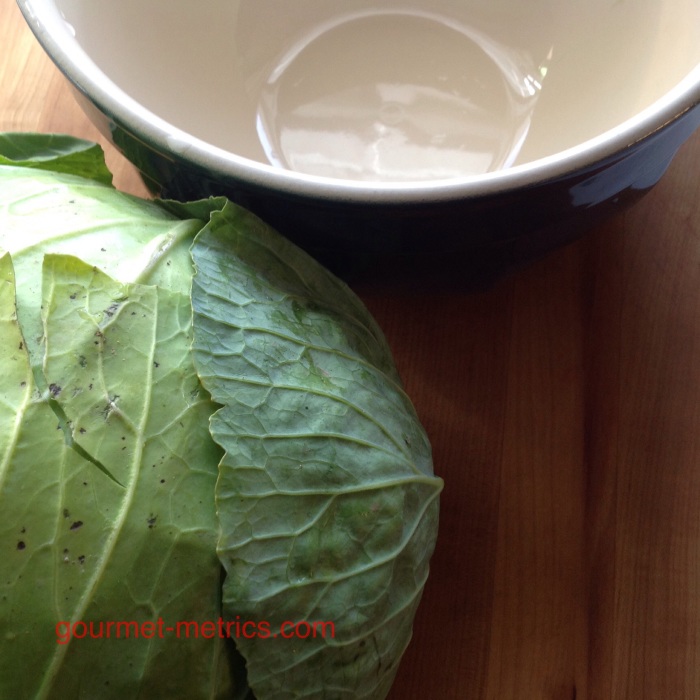Those were Jeff’s words of encouragement when I told him I wanted to make a sauerkraut.
Why you may be asking did I want to make sauerkraut? Here’s why. My CSA had put a gigantic humongous incredibly heavy 5 1/2 pound cabbage in my box and, along with other 10 pounds of assorted vegetables, I had one week before the next delivery to figure out what to do with the lavish abundance. Besides I never made a sauerkraut before.
Now I am not a complete novice. I did ferment some cucumbers once. Granted it was way before I met Jeff, but I didn’t poison my self that time. And that was really before I had a clue what I was doing.
Just for the record, those fermented cucumbers were the best pickles I have ever eaten.
I still don’t really know what I’m doing now, but I’m a lot more knowledgeable today and even more important I know where to start looking. So with Jeff’s words of encouragement ringing in my ears, I began my search.
For do it yourself sauerkraut, the Internet really excels. So I did my due diligence reading up on the matter and determined that fermentation is one of the older forms of preservation practiced by us humans. As it is technically called, lacto-fermentation has been practiced for centuries as a method for preserving excess vegetable at the end of the growing season.
During the fermentation process, the vegetables are cut or shredded, and salt is added. The salt draws out the vegetable liquid and the vegetables ferment in their juices.
State Extension Services seem to have the more detailed technical information like percentage of salt solution and temperature ranges most favorable to promote the growth of the good guys i.e. lactic acid and discourage entry of the bad guys i.e. spoilage or food poisoning microorganisms otherwise know as the stuff that makes you sick.
I also checked a FaceBook group for people who love to ferment all kinds of weird stuff. I got a lot of moral support and realized there were lots of people out there who ferment cabbage into sauerkraut and have lived to talk about it.
I need to Follow directions. Need to be careful. It’s times like this I am glad I took microbiology.
Okay, if primitive illiterate humans can ferment a cabbage and live to tell about it, a well educated, intelligent, twenty-first century female should certainly be able to rise to the occasion.
So I gathered my references, pulled out my biggest bread bowl, washed and sliced my caggage, measured out my salt solution, and set it all to ferment at the appropriate temperature. And I checked it every day.
The fermentation process appears to be variable. As little as three days and as long as three months. Depends on which source you read and which person you talk to. However on day ten, here in New York we got hit with a cold spell so I decided it was time to close down the cottage industry. I packed the sauerkraut into to liter glass containers and moved them to the frig. We had pork chops on Sunday, so I served some kraut alongside with sweet potatoes.
Jeff’s responce “This tastes pretty good … It sure tastes like sauerkraut … “.
Next step is to build up enough courage to take a taste straight up. I tagged it safe. Now I need to follow through and taste it without heating the kraut up first.

